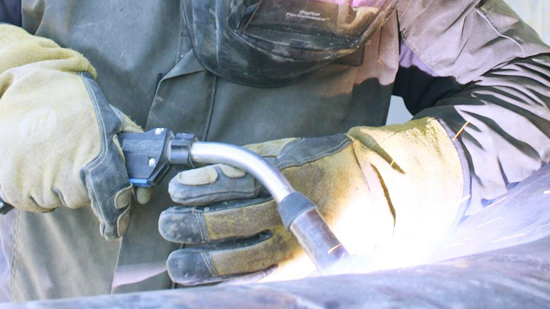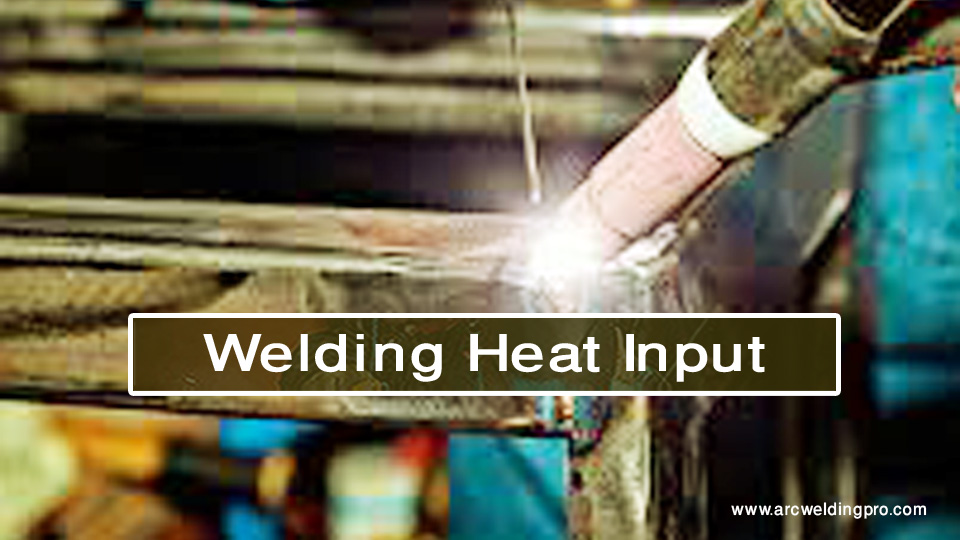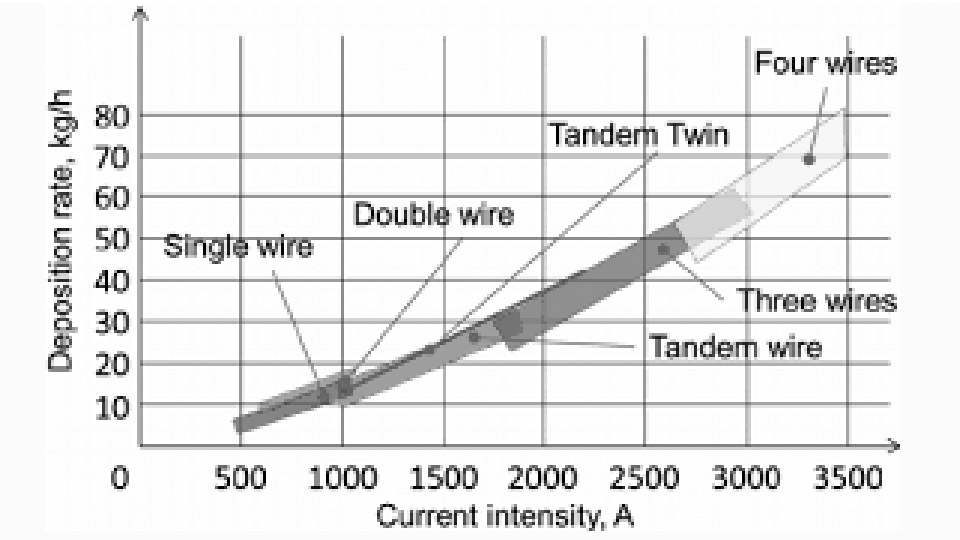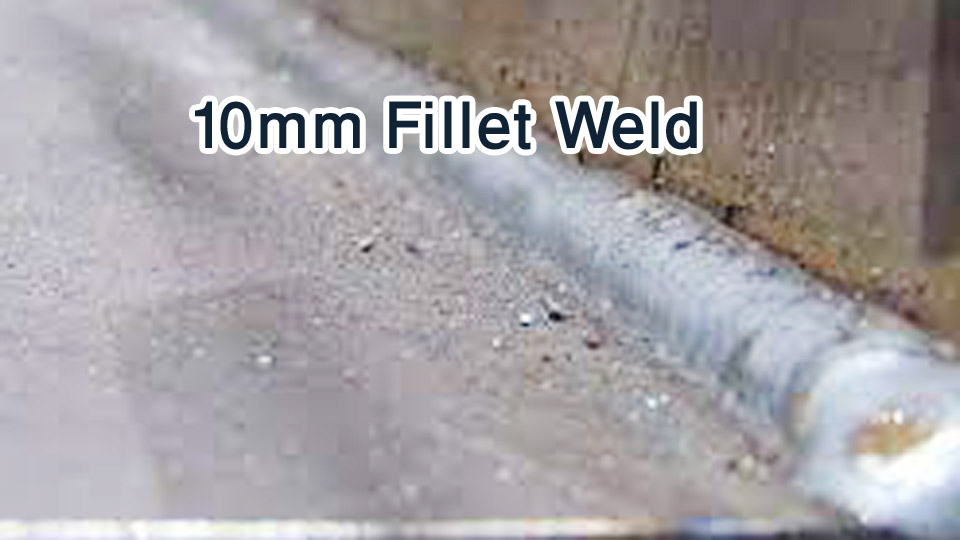Welding productivity refers to the efficiency and output achieved in welding operations. To improve welding productivity, it is essential to optimize various factors such as equipment, techniques, and workflow.
By implementing strategies such as proper training, utilizing advanced welding technologies, ensuring equipment maintenance, and streamlining processes, welding productivity can be significantly enhanced. This ultimately leads to improved efficiency, reduced costs, and increased output in welding operations.

Photo by itwwelding
What is Welding Productivity
Increase welding productivity by optimizing processes and equipment. Enhance efficiency through proper training and use of advanced technologies. Streamline operations to minimize downtime and maximize output.
Importance Of Welding In Manufacturing
Welding plays a crucial role in manufacturing processes, joining metals efficiently for various products.
Measuring Welding Productivity
Welding productivity is measured by factors like deposition rates, arc-on time, and overall efficiency. Introduction to Welding Productivity: Welding productivity refers to the efficiency and effectiveness of welding processes in manufacturing. It involves maximizing output while minimizing costs and time spent on welding tasks. Improving welding productivity can lead to increased profitability and competitiveness in the market.
Key Factors Affecting Welding Productivity
Improving welding productivity involves optimizing key factors like equipment maintenance, proper training, and workflow efficiency. By ensuring equipment is well-maintained and providing comprehensive training, productivity can be enhanced significantly. Streamlining workflow processes further boosts overall welding productivity levels.
Welding productivity is essential for any welding project to be successful. It is the measure of how much work can be done in a given time while maintaining the highest level of quality. There are several factors that affect welding productivity. In this section, we will discuss the key factors that impact welding productivity and how to improve them.
Material Preparedness
Material preparedness is one of the critical factors affecting welding productivity. Before welding, it is crucial to prepare the materials properly. The preparation involves cleaning, cutting, and fitting the materials accurately. A poorly prepared material can cause delays, rework, and waste of resources. It is essential to ensure that the materials are correctly prepared to improve welding productivity.
Welder Skill Levels
The skill level of the welder is another factor that affects welding productivity. Experienced and skilled welders can complete the job efficiently and quickly. On the other hand, unskilled welders may struggle to complete the task, leading to delays and rework. Therefore, it is essential to ensure that the welder has the right skills and experience required for the job to improve welding productivity.
Equipment Efficiency
The efficiency of the equipment is another factor that affects welding productivity. Old or faulty equipment can cause delays, rework, and waste of resources. Therefore, it is essential to ensure that the equipment used for welding is in good condition and maintained regularly. This will help to improve welding productivity, as the equipment will work efficiently and effectively.
Welding productivity is critical for any welding project to be successful. To improve welding productivity, it is essential to ensure that the materials are correctly prepared, the welder has the right skills and experience, and the equipment used is in good condition and maintained regularly. By improving these key factors, welding productivity can be increased, resulting in faster completion of the project, reduced costs, and improved quality.
Challenges In Improving Welding Productivity
Improving welding productivity involves optimizing processes to increase output without sacrificing quality. This can be achieved by implementing efficient welding techniques, using advanced equipment, and providing comprehensive training for welders. By focusing on minimizing downtime and streamlining operations, companies can enhance their overall productivity and profitability.
Welding productivity is the measure of how efficiently welding tasks are completed. Improved productivity means completing welding tasks quickly without compromising quality, safety, and cost. Improving welding productivity is a challenge that requires a balance between speed, quality, and cost.
Balancing Quality With Speed
The primary challenge in welding productivity is balancing quality with speed. High-quality welding requires precision and attention to detail, which can slow down the welding process. On the other hand, fast welding can compromise quality and lead to errors and rework, which can increase the overall time spent on the task. The key to improving welding productivity is to find the right balance between quality and speed.
Managing Costs
Another challenge in improving welding productivity is managing costs. Welding tasks require significant resources, including equipment, materials, and labor. The cost of these resources can quickly add up, making it difficult to complete welding tasks efficiently. To improve welding productivity, it is essential to manage costs by optimizing resource usage and minimizing waste.
Ensuring Safety
Ensuring safety is a critical challenge in improving welding productivity. Welding tasks can be hazardous, and safety measures must be in place to protect workers and equipment. Safety protocols can slow down the welding process, reducing productivity. However, compromising safety can lead to accidents, injuries, and downtime, which can significantly impact productivity. Therefore, ensuring safety is a crucial aspect of improving welding productivity.
Improving welding productivity is a complex challenge that requires balancing quality with speed, managing costs, and ensuring safety. By finding the right balance between these factors, organizations can improve their welding productivity and complete tasks efficiently.
Technological Advancements In Welding
Technological advancements in welding have revolutionized the way welding processes are carried out, leading to significant improvements in productivity. These advancements have introduced automation in welding and have brought about advancements in welding equipment. Let’s explore these two areas and see how they contribute to enhancing welding productivity.
Automation In Welding
Automation in welding refers to the use of robotic systems and computer-controlled machines to perform welding tasks. This technology has eliminated the need for manual labor in certain welding processes, resulting in increased efficiency and productivity.
Robotic welding systems, equipped with precision sensors and advanced programming, can perform repetitive welding tasks with unparalleled accuracy. They can work continuously without breaks, leading to faster completion of welding projects.
Robotic welding systems can work in hazardous environments and handle complex welding tasks that may be challenging for human welders. This not only improves productivity but also ensures the safety of workers by reducing their exposure to dangerous welding conditions.
Advancements In Welding Equipment
Advancements in welding equipment have played a significant role in improving welding productivity. These advancements include the development of more efficient power sources, improved wire feed systems, and enhanced welding consumables.
New power sources offer better control over the welding process, allowing welders to achieve higher quality welds in less time. These power sources provide stable arcs, which result in reduced spatter and improved weld penetration.
Wire feed systems have also undergone significant improvements. They now offer better wire control, ensuring consistent and precise wire feeding. This leads to smoother welding operations and reduces the time spent on correcting welding defects.
Advancements in welding consumables, such as electrodes and filler wires, have resulted in improved weld quality and increased productivity. These consumables offer better arc stability, enhanced deposition rates, and improved weld properties, making the welding process more efficient.
In addition, the development of portable welding equipment has made it easier to carry out welding tasks in various locations. Portable welding machines are lightweight, compact, and versatile, allowing welders to work in tight spaces or remote areas efficiently.
Technological advancements in welding, including automation and advancements in equipment, have significantly improved welding productivity. These advancements have not only increased the speed and efficiency of welding processes but also enhanced the quality and safety of welds. Embracing these advancements can help businesses stay competitive and achieve higher levels of productivity in the welding industry.
Strategies For Enhancing Welding Productivity
Effective Training Programs
Implementing effective training programs is crucial for enhancing welding productivity. By providing comprehensive training to welding personnel, companies can ensure that their workers are equipped with the necessary skills and knowledge to perform their tasks efficiently. Training programs should cover various welding techniques, safety protocols, and equipment operation, empowering workers to deliver high-quality welds in a timely manner.
Workflow Optimization
Optimizing the workflow is essential for maximizing welding productivity. Streamlining the welding process through careful planning and organization can significantly reduce downtime and enhance overall efficiency. By identifying and eliminating bottlenecks in the workflow, companies can ensure a smooth and continuous welding operation, leading to improved productivity and output.
Maintenance And Upkeep
Regular maintenance and upkeep of welding equipment are critical for sustaining high productivity levels. Establishing a proactive maintenance schedule ensures that welding machinery and tools are functioning optimally, minimizing the risk of unexpected breakdowns and delays. Routine maintenance helps to prolong the lifespan of equipment, ultimately contributing to sustained productivity and cost savings.
Materials Management For Better Productivity
Materials management plays a crucial role in enhancing welding productivity by ensuring efficient inventory control and just-in-time supply. Proper management of materials reduces downtime, minimizes waste, and optimizes workflow, ultimately leading to improved overall productivity and cost savings.
Inventory Control
Effective inventory control is vital for welding productivity. By maintaining accurate records of materials, equipment, and consumables, businesses can prevent stockouts, reduce excess inventory, and streamline the replenishment process. Utilizing inventory management software can help in tracking stock levels, identifying usage patterns, and forecasting future material requirements, enabling businesses to maintain an optimal level of inventory at all times.
Just-in-time Supply
Implementing a just-in-time supply approach allows businesses to receive materials precisely when they are needed for the welding process. By eliminating excess inventory and reducing lead times, this strategy enhances productivity, minimizes storage costs, and enables smooth production flow. Building strong relationships with reliable suppliers and establishing clear communication channels are essential for successful just-in-time supply management.
Monitoring And Measurement Tools
Effective monitoring and measurement tools are essential for enhancing welding productivity. By utilizing Welding Data Key Performance Indicators, companies can track progress and identify areas for improvement.
Use Of Welding Data
Utilizing welding data provides insights into productivity levels, helping teams optimize processes and enhance efficiency.
Key Performance Indicators
Key Performance Indicators (KPIs) are vital metrics that gauge the success of welding operations, enabling teams to set goals and track performance.
Case Studies On Welding Productivity Improvement
Case studies on welding productivity improvement provide valuable insights into real-world scenarios where companies have successfully enhanced their welding processes. These success stories offer practical lessons and strategies that can be applied to improve welding productivity in various industrial settings.
Success Stories From The Industry
One notable success story comes from a fabrication company that implemented advanced robotic welding systems to streamline their production process. By leveraging automation and precision technology, they were able to significantly reduce welding time and enhance overall productivity. This resulted in a substantial increase in output and a reduction in operational costs, leading to improved profitability.
Lessons Learned
Through these case studies, valuable lessons have been learned about the importance of investing in modern welding equipment and technology. Companies have discovered that embracing innovation and automation can yield remarkable improvements in productivity, quality, and efficiency.
Additionally, the significance of providing comprehensive training and support to welding operators has been highlighted, as skilled and knowledgeable personnel play a critical role in driving productivity gains.
Conclusion
To enhance welding productivity, focus on training, equipment maintenance, and process optimization. Implementing these strategies can lead to improved efficiency and quality in welding operations. By prioritizing productivity, businesses can maximize output and profitability while minimizing costs and errors. Embracing these methods will propel welding productivity to new heights.

I’m Darrell Julian, the founder, lead writer, and hands-on welding enthusiast behind ArcWeldingPro.com. With more than 15 years of real-world welding experience, I created this platform to share what I’ve learned in the field, in the shop, and in the heat of the arc.



